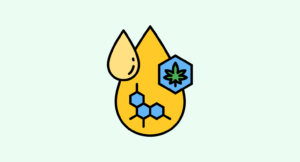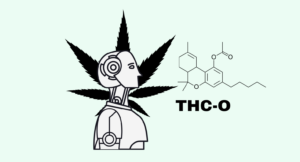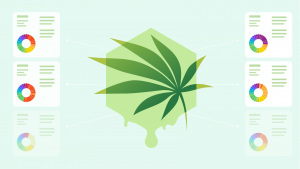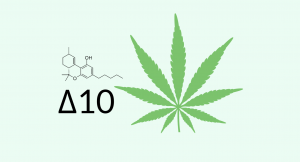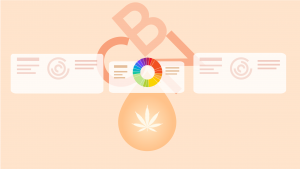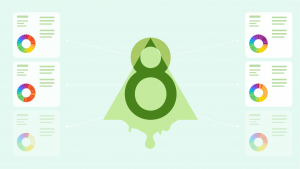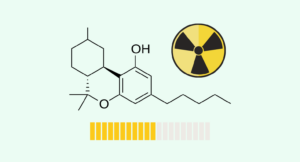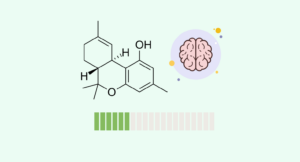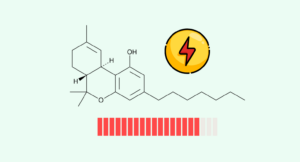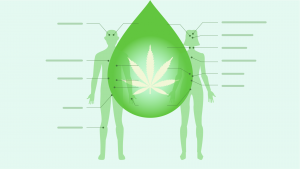Evidence based
What is CBDV? How Does it Compare to CBD?
CBDV (cannabidivarin) is a non-psychoactive homolog of CBD. It’s most abundant in African landrace strains along with other varin cannabinoids like THCV.
As the cannabis market continues to mature, more people are looking beyond the confines of conventional THC or CBD and seeking out new cannabinoids on the horizon.
One of the more interesting cannabinoids to enter the public sphere lately is a compound called cannabidivarin — CBDV for short.
As you might expect, CBDV shares a similar structure to CBD (cannabidiol), but with some key differences. This cannabinoid excels in some areas over CBD but falls short in others.
Here, we’ll explore everything we know so far about this novel non-psychoactive cannabinoid. We’ll explain how it works, what the research says about its therapeutic effects, and how it differs from CBD.
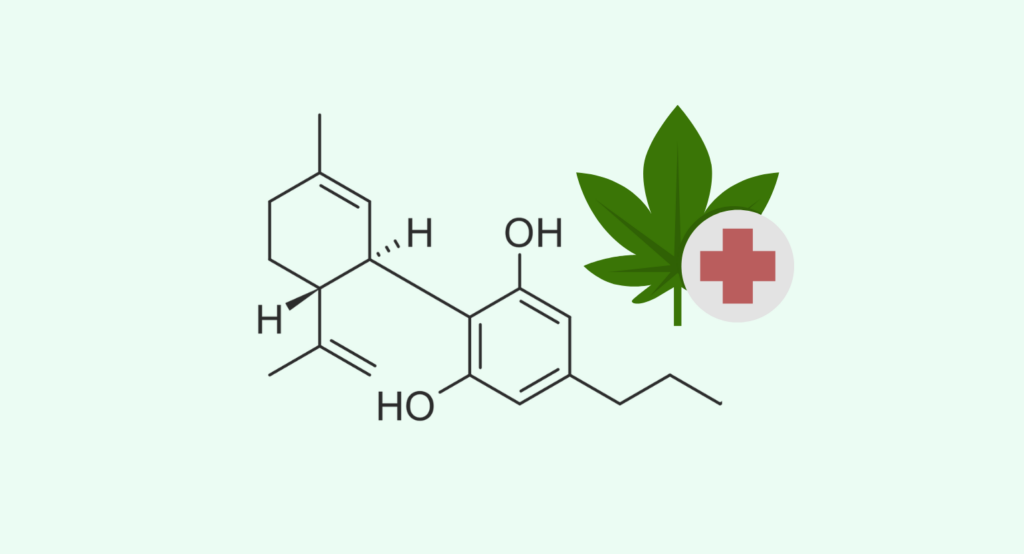
What is CBDV?
Scientists have known about both two varin-type cannabinoids, CBDV and THCV, since the early 1970s [2].
While CBDV has shown similar health benefits as CBD, research has been lagging on this cannabinoid until very recently.
The problem is that CBDV is rarely found in concentrations higher than 1% in most cannabis plants. This makes it difficult and expensive to source in high enough quantities to use for medical research. CBD was much more available, cheaper to produce, and offered comparable health benefits — so most researchers have been focusing on this cannabinoid instead.
Recently, several African landrace strains of Cannabis indica were found to have CBDV and the related THCV in concentrations closer to 4%. There are also plant breeders creating high CBDV and THCV strains of hemp and marijuana — but the current record still sits below 7% CBDV.
This is a long way off the 20–30% CBD content commercial hemp plants can produce.
Despite all the foot-dragging for the last 50 years, CBDV research has started to pick up steam. The pharmaceutical giant, GW Pharmaceuticals, has been developing a CBDV medication called GPW42006 for several years. They were set to enter Phase III trials in late 2019 but had to terminate the study because of the pandemic. They’re currently recruiting for a new trial.
GW Pharmaceuticals is the company behind a synthetic CBD-based medication called Epidiolex®, which is used to treat epileptic seizures.
Some of the preliminary research on CBDV suggests it may be even more effective for managing certain forms of pain, neurological disorders, and osteoarthritis than CBD. It’s become the primary cannabinoid of focus for treating autism spectrum disorder (ASD) and a promising candidate for new muscular dystrophy treatments.
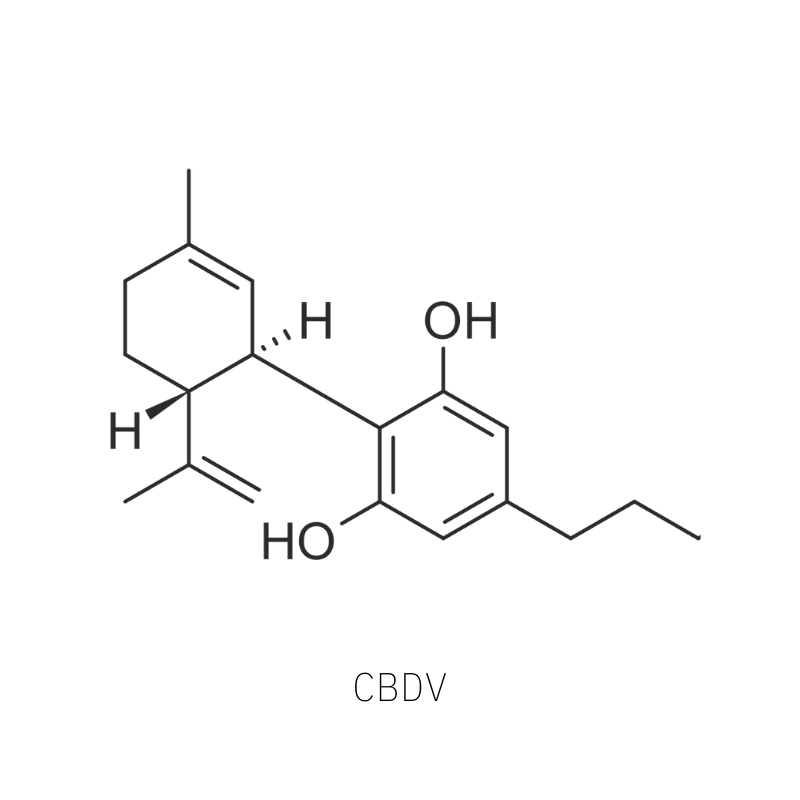
What Are Varin Cannabinoids?
Varin cannabinoids (technically called varinolic cannabinoids) are a subfamily of cannabinoids that feature three carbons on their alkyl side chains. The most well-known examples are THCV, CBDV, CBGV, and CBCV. There are also acid forms of each — THCVA, CBDVA, CBGVA, and CBCVA.
Conventional cannabinoids, such as CBD, CBC, or THC, all have five carbons rather than three.
There are also groups that have one carbon, such as THCC, and others, such as the phoral cannabinoids that have seven carbons.
The number of carbons on this side chain is important because they affect the binding affinity for a variety of different receptors.
Shorter chains, as featured on the varin cannabinoids, have a lower binding affinity for the CB1 and CB2 receptors but have a higher affinity for the TRP receptors. In most cases, the longer the chain, the stronger the effects.
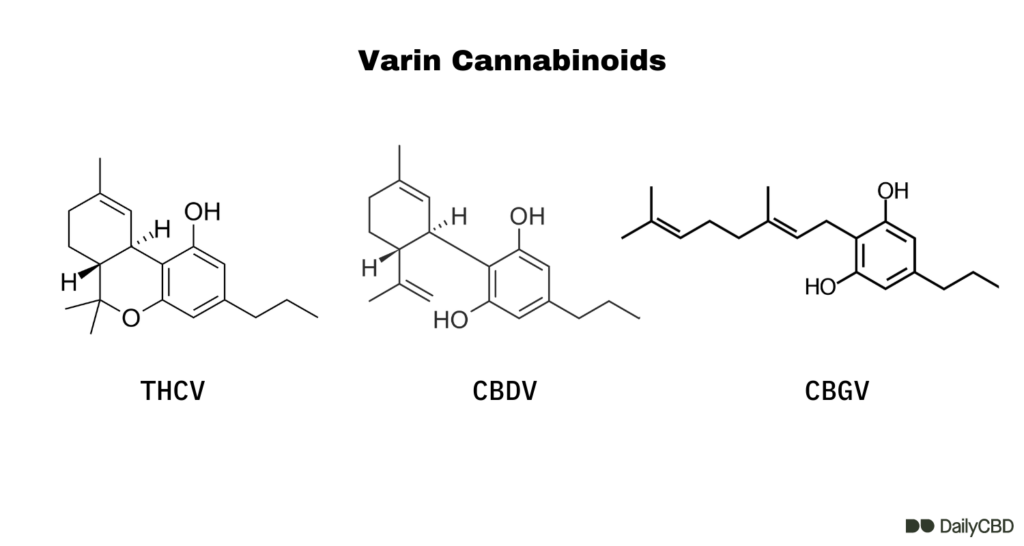
What Are the Benefits of CBDV?
CBDV has many of the same benefits as CBD. It’s reported to help alleviate chronic pain, reduce anxiety, improve sleep, relax the muscles, and more.
But there are some differences.
CBD is generally considered better for chronic pain, inflammation, and hormonal dysfunction, while CBDV is better for neuropathic pain, migraines, and epilepsy.
Unfortunately, there isn’t much research available for CBDV. Most of the research currently available was research funded by GW Pharmaceuticals — a company that’s been developing a CBDV-based medication for nearly a decade.
Here’s what we know about this cannabinoid so far:
1. CBDV For Nausea
Animal studies have shown CBDV and THCV were both able to prevent toxin-induced nausea in rats [4].
The endocannabinoid system is intimately involved with the nausea response. When the ECS is blocked, we feel nauseous. When it’s stimulated, nausea symptoms improve [5].
This means cannabinoids that have a direct stimulating effect on the ECS are going to work better for nausea than those with a more passive effect. CBDV and CBD are both passive agents. THC and THCV are considered better antinausea agents because of their stimulating action on the ECS.
2. CBDV For Autism Spectrum Disorder (ASD)
There’s no cure for autism. Treatment involves symptomatic support for common grievances experienced alongside the condition (such as chronic anxiety, seizures, addictive behavior, and mood disorders).
There’s evidence that CBDV can help alleviate many of the common concomitant health conditions that often accompany autism spectrum disorder.
One study found that CBDV was able to reduce acute anxiety in patients diagnosed with ASD by shifting the balance of the stimulating neurotransmitter, glutamate, and the relaxing neurotransmitter, GABA [9]. This study compared the effects of CBDV in neurodiverse patients, as well as neurotypical patients. They noted a higher degree of difference in ASD patients with elevated glutamate. Very little benefit was reported on those with normal glutamate levels.
Some studies have even shown people diagnosed with autism spectrum disorder (ASD) have below-average anandamide levels in the brain [6]. Anandamide is one of the chief endocannabinoids in the human body.
CBD has been shown to attenuate anandamide levels by slowing its rate of decay by blocking an enzyme called FAAH. CBD also enhances the binding affinity of naturally occurring cannabinoids like anandamide [7]. Whether CBDV does this as well is still being investigated.
3. CBDV For Rett Syndrome
Rett syndrome is a rare and difficult to treat genetic condition. There’s no cure for it, so treatment revolves around managing the symptoms of the disorder and improving quality of life.
CBDV has recently been brought forward as a potentially new treatment option for people suffering from Rett syndrome. Animal models used to study the condition were used to explore the effects of CBDV on aspects such as motor coordination, excess brain weight, and social deficits [10].
The study demonstrated that CBDV offered benefits on all of these factors in the experimental Rett Syndrome model. It improved general health levels, improved sociability deficits, improved motor coordination, and normalized the brain weight of affected mice.
4. CBDV For Duchenne Muscular Dystrophy
A study published by the National Research Council in Italy examined the effects of CBD, CBDV, and THCV on three underlying causes of DMD [11].
What the team found was that CBD and CBDV (but not THCV) were able to restore the function of impaired muscle stem cells, persistent inflammation in the muscle tissue, and attenuate defective autophagy. These results required consistent, high doses of CBD or CBDV.
These findings suggest both CBD and CBDV could provide effective treatment to the underlying pathophysiology of many different forms of muscular dystrophy — not just DMD.
5. CBDV For Intractable Epilepsy
The development of GW Pharmaceuticals’ upcoming CBDV-based medication (GPW42006) has been leading the way in terms of exploring the anti-epileptic effects of this cannabinoid.
While there was compelling evidence that CBDV could suppress chemically-induced seizures in animal studies [8,12], Phase II clinical trials on focal seizures proved disappointing. CBDV was ineffective at managing focal seizures in the 162 patient study conducted by GW Pharmaceuticals.
The company is now focusing its research for epilepsy on its CBD-based medication, Epidoliex, and focusing CBDV research on autism spectrum disorder (currently entering Phase III clinical trials).
Related: Can CBD be used to treat epileptic seizures?
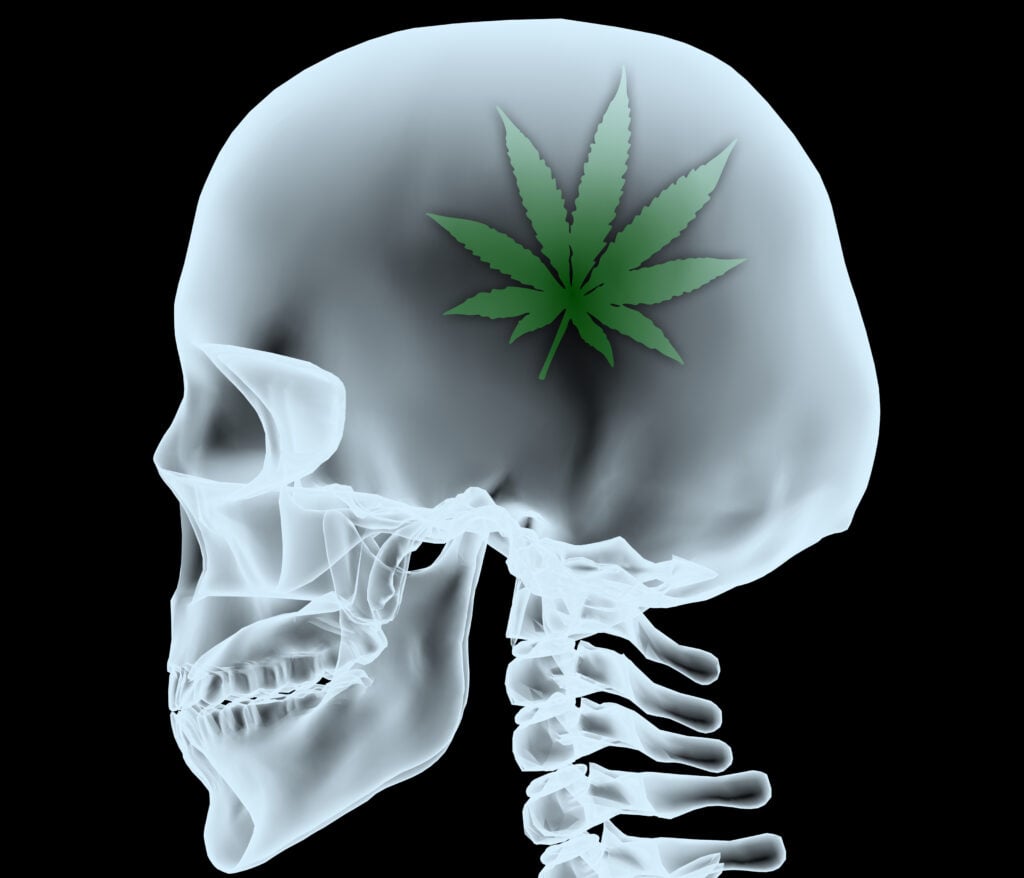
Future Research on CBDV
While the pandemic has dramatically slowed clinical research across the board, there are several trials currently recruiting or in the planning stages. There are currently three clinical studies taking place involving CBDV.
GW Pharmaceuticals is funding two of them — one for ASD and one for a rare condition called Prader Willi Syndrome.
Here’s a glimpse at what the future CBDV research looks like at the highest level:
- Cannabidivarin (CBDV) vs. Placebo in Children With Autism Spectrum Disorder (ASD) — Recruiting
- CBDV vs. Placebo in Children and Adults up to Age 30 With Prader-Willi Syndrome (PWS) — Recruiting
- Androgenetic Alopecia Treatment Using Varin and Cannabidiol Rich Topical Hemp Oil: A Case Series — Recruiting
How Does CBDV Work?
CBDV is very similar to CBD but with some distinct differences.
Both of these compounds provide the majority of their benefits through one of two systems:
- The Endocannabinoid System — CB1, CB2, DAG inhibition, & FAAH Inhibition
- TRP Ion Channels — TRPV1 TRPV2, TRPV3, TRPV4, & TRPA1
1. The Endocannabinoid System (ECS)
The endocannabinoid system is involved with virtually every organ system in the body. It works like a communication network between the organs. While the neurons send information forward, the endocannabinoid system works in reverse — letting the sender know the message was received.
This may not sound important, but this has massive implications on the body. When the ECS isn’t functioning properly, we may experience symptoms such as insomnia, anxiety, menstrual irregularities, increased pain sensitivity, migraines, and much more.
There’s even a theory that clinical endocannabinoid deficiency (CED) may be an underlying cause for chronic conditions such as glaucoma, irritable bowel syndrome, menstrual pain, PTSD, and more.
CBDV & The Endocannabinoid System
CBDV interacts with the endocannabinoid system (ECS) the same way as CBD. However, it’s thought to have about 25% of the potency of CBD.
Unlike THC, CBD and CBDV don’t directly stimulate or suppress the ECS directly. Instead, they have a modulating action, which means they’re able to both increases or decrease the sensitivity of these receptors depending on the internal conditions of the body.
CBDV has also been shown to inhibit an enzyme called DAGLɑ (diacylglycerol lipase ɑ) [13]. DAGLɑ is the primary enzyme responsible for the synthesis of the endocannabinoid 2-AG from its precursor, diacylglycerol.
2. TRP Ion Channels
The TRP ion channels act like a series of sensors located throughout the body. They trigger an alert in the nervous system when they detect noxious chemicals or dangerously hot or cold temperatures.
Foods like hot chilis, wasabi, and mustard activate these receptors, which produce the characteristic “spicy” sensation when we eat these foods. This is why members of this family are often referred to with names like the “wasabi receptor” (TRPA1) or the “capsaicin receptor” (TRPV1).
These receptor proteins also become active in the presence of tear gas, pepper spray, certain aerosols, as well as excessive heat or excessive cold temperature. This response is thought to be at the root cause of many chronic health conditions.
For example, excessive stimulation of TRPA1 is thought to play a role in the pathophysiology of migraine headaches — particularly those triggered by cigarette smoke, certain fragrances or aromas, high heat, or freezing cold.
Certain epileptic conditions and neuropathic pain from certain chemotherapy medications are also thought to be caused by a dysfunction of TRP.
CBDV & The TRP Ion Channels
Both CBD and CBDV have been shown to mediate specific TRP channels — including TRPA1, TRPV1, TRPV2, and TRPV3.
While CBD is thought to have a stronger impact on the ECS, CBDV has a stronger impact on the TRP channels.
This would make CBDV even better than CBD for conditions related to dysfunctional TRP — such as migraine headaches, neuropathic pain, certain forms of epilepsy, and excessive sensitization to pain.
There’s even some research that suggests the TRP channels are involved with the pain originating from osteoarthritis [1].
A study exploring the effects of cannabinoids on the TRP receptors compared the effects of various cannabinoids on the TRP receptors [3]. The study found that CBDV had a greater impact on the TRP receptors than CBD, THC, CBG, CBC, CBN, and CBGV, but a weaker action than THCV.
Comparing the effects of cannabinoids on the TRP receptors (TRPV3):
| Cannabinoid | Efficacy | Desensitization |
| CBDV | 30.2 | 2.9 |
| CBD | 16.7 | 1.1 |
| THCV | 59.8 | 3.2 |
| CBG | 23.7 | 1.3 |
| CBGV | 26.1 | 1.8 |
| CBN | 15.3 | 5.4 |
*THCC wasn’t included in this study but has been shown to have a high affinity for these receptors as well.
CBDV vs. CBD: What’s The Difference?
Structurally, CBD and CBDV are nearly identical. The only difference is the number of carbon atoms in one of the side chains.
CBD has a pentyl group — which means it has five carbons in this chain. CBDV has a propyl group — which means it has only three carbons.
The difference of two carbon atoms is enough to alter the way these compounds interact with the body. Everything from receptor binding and potency to absorption and metabolism are affected.
In general, CBD is the more potent cannabinoid for generalized pain and inflammation. It’s also proven to be more effective for alleviating seizures and obsessive-compulsive disorder. CBD also has a higher bioavailability in the brain (roughly 40% more bioavailable) [13].
Where CBDV excels is in its ability to interact with the TRP channels. This could make CBDV more effective for conditions involving these ion channels — such as neuropathic pain, muscular dystrophy, and autism spectrum disorder.
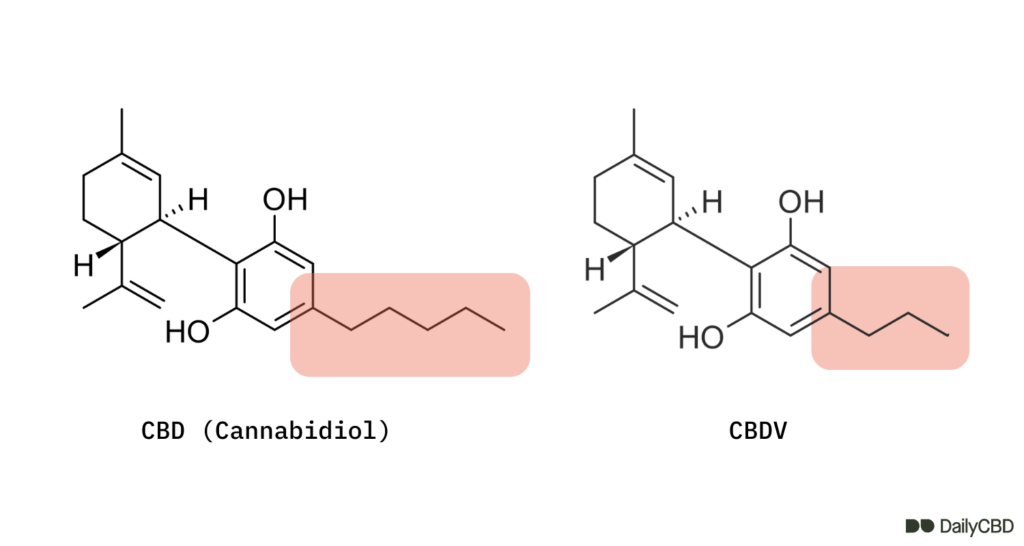
Strains That Contain CBDV
CBDV can be found naturally in most forms of cannabis — but only in trace amounts.
African landrace cannabis strains were found to contain abnormally high concentrations of both CBDV and THCV. Cannabis breeders have started using these plants to breed new high-potency CBDV and THCV strains.
Some are already available today.
Here are some of the highest CBDV strains available today:
- Medical Mass
- Euphoria
- Painkiller XL
- Royal Medic
- Dance World
- CBD-Victory
Where to Buy CBDV
CBDV can be hard to find these days. There are only a few companies selling this niche cannabinoid. The ones that do tend to charge a high price for it.
The best place to find CBDV is in products marketed for their THCV content. THCV is substantially more popular because of its psychoactive effects, and most full-spectrum THCV products also contain high concentrations of CBDV.
For example, companies like Lula Cannabinoids and Spyglass CBD carry full-spectrum varin extracts, which consist of both THCV and CBDV. You can find distillates, tinctures, gummies, and vape carts that contain both cannabinoids together. Just make sure you’re not ordering THCV isolate, which contains nothing but pure THCV without any CBDV.
You can also find CBDV-rich hemp seed genetics from companies like Seedsman. Check out their CBDV 1:1 auto feminized seeds to grow high-CBDV strains at home.
What’s The Future Look Like For CBDV?
Despite a widespread lack of research on this novel cannabinoid, CBDV has shown a lot of promise for treating several chronic, treatment-resistant health conditions.
From the research available today, CBDV is a promising candidate for new autism spectrum disorder treatments to help manage some of the symptoms correlated with the condition (such as decreased sociability, anxiety, mood disorders, and low anandamide levels).
CBDV is also a promising candidate for muscular dystrophy and neuropathic pain due to its high affinity for the TRP ion channels (an area where CBD lags behind).
CBDV is less bioavailable than CBD and appears to be less effective for general pain and epilepsy.
More research is needed to understand the true benefits CBDV has to offer. As more plant breeders develop high CBDV and related THCV strains, it’s likely we’ll start to see more interest among the public as well as research teams surrounding this unique cannabinoid.
References
- Chen, Y., Yang, C., & Wang, Z. J. (2011). Proteinase-activated receptor 2 sensitizes transient receptor potential vanilloid 1, transient receptor potential vanilloid 4, and transient receptor potential ankyrin 1 in paclitaxel-induced neuropathic pain. Neuroscience, 193, 440-451.
- Merkus, F. W. (1971). Cannabivarin and tetrahydrocannabivarin, two new constituents of hashish. Nature, 232(5312), 579-580.
- De Petrocellis, L., Orlando, P., Moriello, A. S., Aviello, G., Stott, C., Izzo, A. A., & Di Marzo, V. (2012). Cannabinoid actions at TRPV channels: effects on TRPV3 and TRPV4 and their potential relevance to gastrointestinal inflammation. Acta physiologica, 204(2), 255-266.
- Rock, E. M., Sticht, M. A., Duncan, M., Stott, C., & Parker, L. A. (2013). Evaluation of the potential of the phytocannabinoids, cannabidivarin (CBDV) and Δ9‐tetrahydrocannabivarin (THCV), to produce CB1 receptor inverse agonism symptoms of nausea in rats. British journal of pharmacology, 170(3), 671-678.
- Després, J. P., Golay, A., & Sjöström, L. (2005). Effects of rimonabant on metabolic risk factors in overweight patients with dyslipidemia. New England Journal of Medicine, 353(20), 2121-2134.
- Karhson, D. S., Krasinska, K. M., Dallaire, J. A., Libove, R. A., Phillips, J. M., Chien, A. S., … & Parker, K. J. (2018). Plasma anandamide concentrations are lower in children with autism spectrum disorder. Molecular Autism, 9(1), 1-6.
- Watanabe, K., Kayano, Y., Matsunaga, T., Yamamoto, I., & Yoshimura, H. (1996). Inhibition of anandamide amidase activity in mouse brain microsomes by cannabinoids. Biological and Pharmaceutical Bulletin, 19(8), 1109-1111.
- Amada, N., Yamasaki, Y., Williams, C. M., & Whalley, B. J. (2013). Cannabidivarin (CBDV) suppresses pentylenetetrazole (PTZ)-induced increases in epilepsy-related gene expression. PeerJ, 1, e214.
- Pretzsch, C. M., Voinescu, B., Lythgoe, D., Horder, J., Mendez, M. A., Wichers, R., … & McAlonan, G. M. (2019). Effects of cannabidivarin (CBDV) on brain excitation and inhibition systems in adults with and without Autism Spectrum Disorder (ASD): a single dose trial during magnetic resonance spectroscopy. Translational psychiatry, 9(1), 1-10.
- Vigli, D., Cosentino, L., Raggi, C., Laviola, G., Woolley-Roberts, M., & De Filippis, B. (2018). Chronic treatment with the phytocannabinoid Cannabidivarin (CBDV) rescues behavioural alterations and brain atrophy in a mouse model of Rett syndrome. Neuropharmacology, 140, 121-129.
- Iannotti, F. A., Pagano, E., Moriello, A. S., Alvino, F. G., Sorrentino, N. C., D’Orsi, L., … & Di Marzo, V. (2019). Effects of non‐euphoric plant cannabinoids on muscle quality and performance of dystrophic mdx mice. British journal of pharmacology, 176(10), 1568-1584.
- Hill, A. J., Mercier, M. S., Hill, T. D. M., Glyn, S. E., Jones, N. A., Yamasaki, Y., … & Whalley, B. J. (2012). Cannabidivarin is an anticonvulsant in mouse and rat. British journal of pharmacology, 167(8), 1629-1642.
- De Petrocellis, L., Ligresti, A., Moriello, A. S., Allarà, M., Bisogno, T., Petrosino, S., … & Di Marzo, V. (2011). Effects of cannabinoids and cannabinoid‐enriched Cannabis extracts on TRP channels and endocannabinoid metabolic enzymes. British journal of pharmacology, 163(7), 1479-1494.
